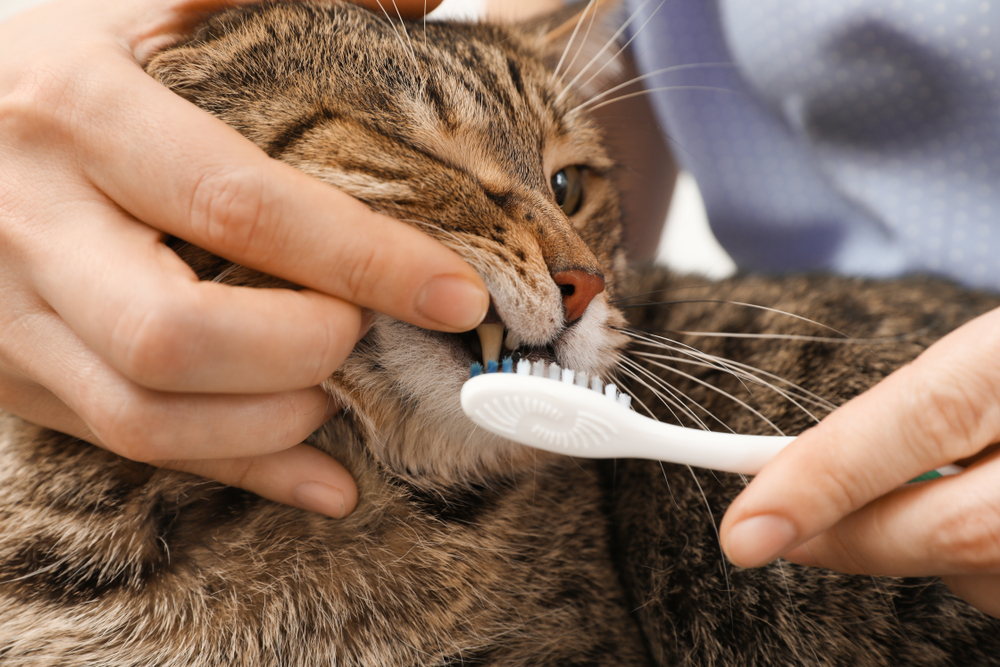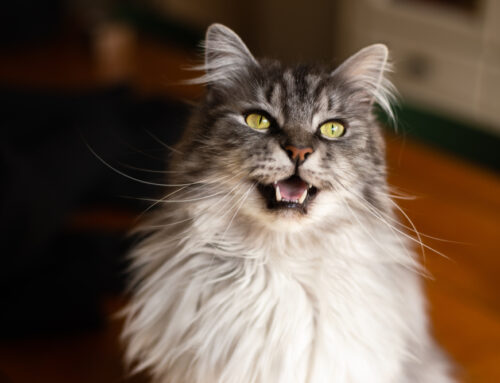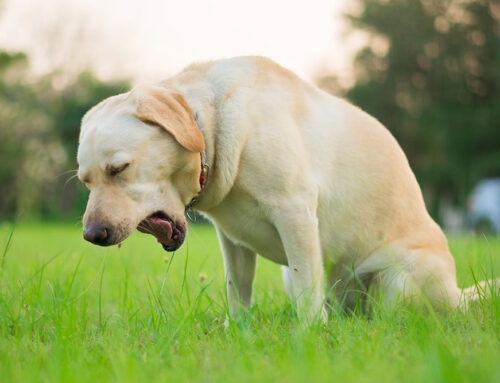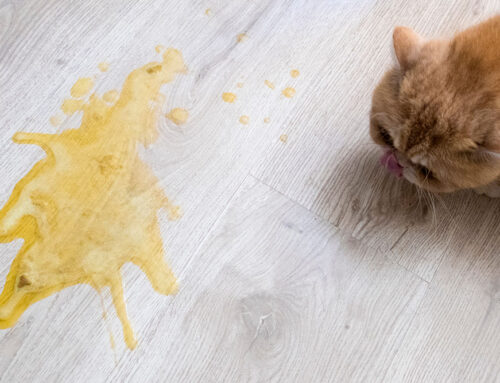Many pet owners don’t give much thought to their pet’s dental health. But, most people brush their teeth twice a day and still end up with dental troubles, such as gingivitis and cavities. Imagine if, like our dogs and cats, we never brushed our teeth. Your visits to the dentist would be much more important, and painful.
Every day, every minute, plaque is accumulating on every tooth. Daily tooth brushing removes the plaque before it can build up and cause damage to teeth and gums. Plaque that is not removed accumulates at the gumline and, over time, turns into calculus, which is the hard, tannish-brown deposit found on the teeth of dogs and cats. Dental plaque and calculus contain bacteria, which can cause periodontitis, a painful dental inflammation, when they seep under the gums.
Chronic inflammation and infection at the gumline can loosen teeth where they attach to the gum. Periodontal disease signs include:
- Gingival swelling, redness, and inflammation (i.e., gingivitis)
- Bad breath (i.e., halitosis)
- Loose or missing teeth
- Chewing difficulties, or chewing food only on one side of the mouth
- Bleeding gums
- Increased salivation
Many owners are surprised to learn that their pets have significant dental disease or dental pain, because their dog or cat is still eating, but pets adapt to a chronic pain situation because they are hungry and need to eat. Pet owners often tell us their pets act like puppies and kittens after their dental issues are addressed.
Preventing dental disease in pets
Brushing your pet’s teeth is the best way to prevent periodontal disease. Begin when your pet is a youngster, if possible, because she will not only become used to the brushing routine early, but she also will enjoy better dental health throughout her life, as well as a reduced risk of developing dental disease.
If your pet is not so young, start by scheduling an appointment with our veterinary team to discuss her current dental health. If she already has any dental disease, we will address that before you start her brushing routine. We can try to examine her teeth and gums in the exam room; however, most patients dislike oral exams and we generally anesthetize patients to allow us to perform a comprehensive exam. So, if we recognize dental disease when we peek quickly in your pet’s mouth, we will recommend another appointment for a thorough oral exam and dental cleaning under anesthesia. Then, while your pet is anesthetized, we will take dental X-rays to help us thoroughly assess your pet’s dental health, correct any problems, such as extracting loose, diseased teeth, clean her teeth, including under the gumline, and polish each tooth.
Brushing your pet’s teeth

When starting a brushing routine at home, take it slowly. The goal is to remove the plaque that builds up daily, which can be achieved with a pet toothbrush and toothpaste made specifically for pets that comes in flavors like poultry and fish. Some pet owners find a bristled ginger brush easier to use. Brush your pet’s teeth daily, if possible, but at least four to five times a week, for the best results.
If you have questions about how to brush your pet’s teeth, or would like to see a demonstration, call us, and one of our team members would be happy to help.








Leave A Comment